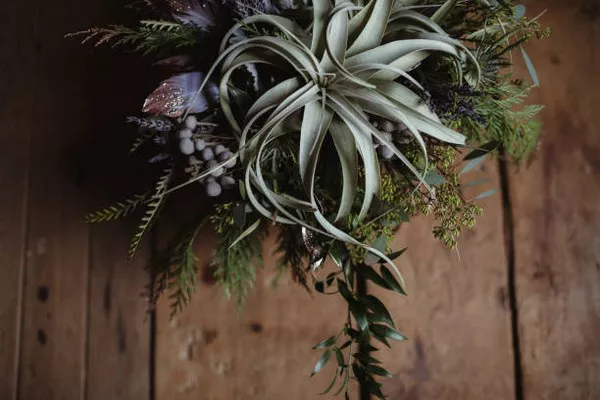Air plants, scientifically known as Tillandsia, have gained popularity as unique and low-maintenance additions to indoor gardens. Their distinctive ability to thrive without soil makes them a favorite among plant enthusiasts. However, like any living organism, air plants require proper care to flourish. In this comprehensive guide, we will explore the essential aspects of maintaining the well-being of air plants, ensuring they remain vibrant and healthy in your living space.
Lighting Requirements:
One of the key factors in the successful care of air plants is providing them with the right amount of light. Air plants are generally adaptable, but they thrive in bright, indirect light. Place them near a window where they can receive filtered sunlight or in an area with sufficient ambient light. Avoid placing them in direct sunlight for extended periods, as this can lead to leaf burn and dehydration.
Watering Techniques:
Contrary to traditional potted plants, air plants absorb water and nutrients through their trichomes, small hair-like structures on their leaves. Proper watering is crucial to their well-being. Submerge your air plants in room temperature water for 20-30 minutes once a week. Alternatively, you can mist them with a spray bottle, ensuring that the entire plant is moistened.
After watering, shake off any excess water and place the air plants upside down on a towel to allow them to dry thoroughly. It is essential to avoid water accumulation at the base of the leaves, as this can lead to rot. Adjust the frequency of watering based on environmental factors such as humidity and temperature, keeping in mind that air plants in high-humidity environments may require less frequent watering.
Air Circulation:
As the name suggests, air plants thrive on good air circulation. Ensuring proper air movement around your plants is crucial for their health. Avoid placing them in enclosed terrariums or glass containers without adequate ventilation, as stagnant air can lead to fungal growth and rot. Instead, display air plants in open containers or mounted on surfaces that allow air to circulate freely.
Temperature Considerations:
Air plants are generally adaptable to a wide range of temperatures, but they do have preferences. They thrive in temperatures between 50°F to 90°F (10°C to 32°C). Protect them from extreme temperature fluctuations and avoid exposing them to freezing temperatures. If you live in a colder climate, bring your air plants indoors during the winter months to shield them from harsh conditions.
Fertilizing Routine:
While air plants can absorb nutrients from the air, they still benefit from occasional fertilization. Use a specially formulated air plant fertilizer, diluted to half the recommended strength, and apply it once a month. It’s crucial not to over-fertilize, as excessive nutrients can lead to salt buildup and harm the delicate trichomes on the leaves. Always apply fertilizer to a thoroughly wet plant to prevent burning.
Creative Display Options:
Air plants are not only easy to care for but also offer a plethora of creative display options. Consider mounting them on driftwood, placing them in decorative containers, or hanging them in glass orbs. When choosing a display method, ensure that it allows for proper air circulation and doesn’t trap moisture, preventing potential issues such as rot. Experiment with different arrangements to showcase the unique beauty of your air plants.
Regular Inspections:
To catch and address potential issues early, conduct regular inspections of your air plants. Check for signs of overwatering, such as brown or mushy leaves, and adjust your watering routine accordingly. Inspect for pests, such as spider mites or aphids, which can harm your plants. If pests are detected, treat them promptly with insecticidal soap or neem oil.
Reviving Dehydrated Air Plants:
Despite your best efforts, air plants may occasionally become dehydrated, especially if they are exposed to prolonged periods of dry conditions. To revive a dehydrated air plant, submerge it in room temperature water for an extended period, up to a few hours. After soaking, follow the regular drying routine, ensuring that excess water is removed. With proper care, air plants can often recover and return to their healthy state.
See Also: How To Look After Air Plants? 7 Tips for Thriving Tillandsias
Conclusion:
Air plants, with their unique characteristics and low-maintenance nature, make for delightful additions to any indoor space. By understanding and implementing the essential care tips outlined in this guide, you can ensure that your air plants thrive and bring a touch of natural beauty to your home. Remember to strike a balance in providing the right amount of light, water, and air circulation, and enjoy the versatility and charm that air plants bring to your living environment.


